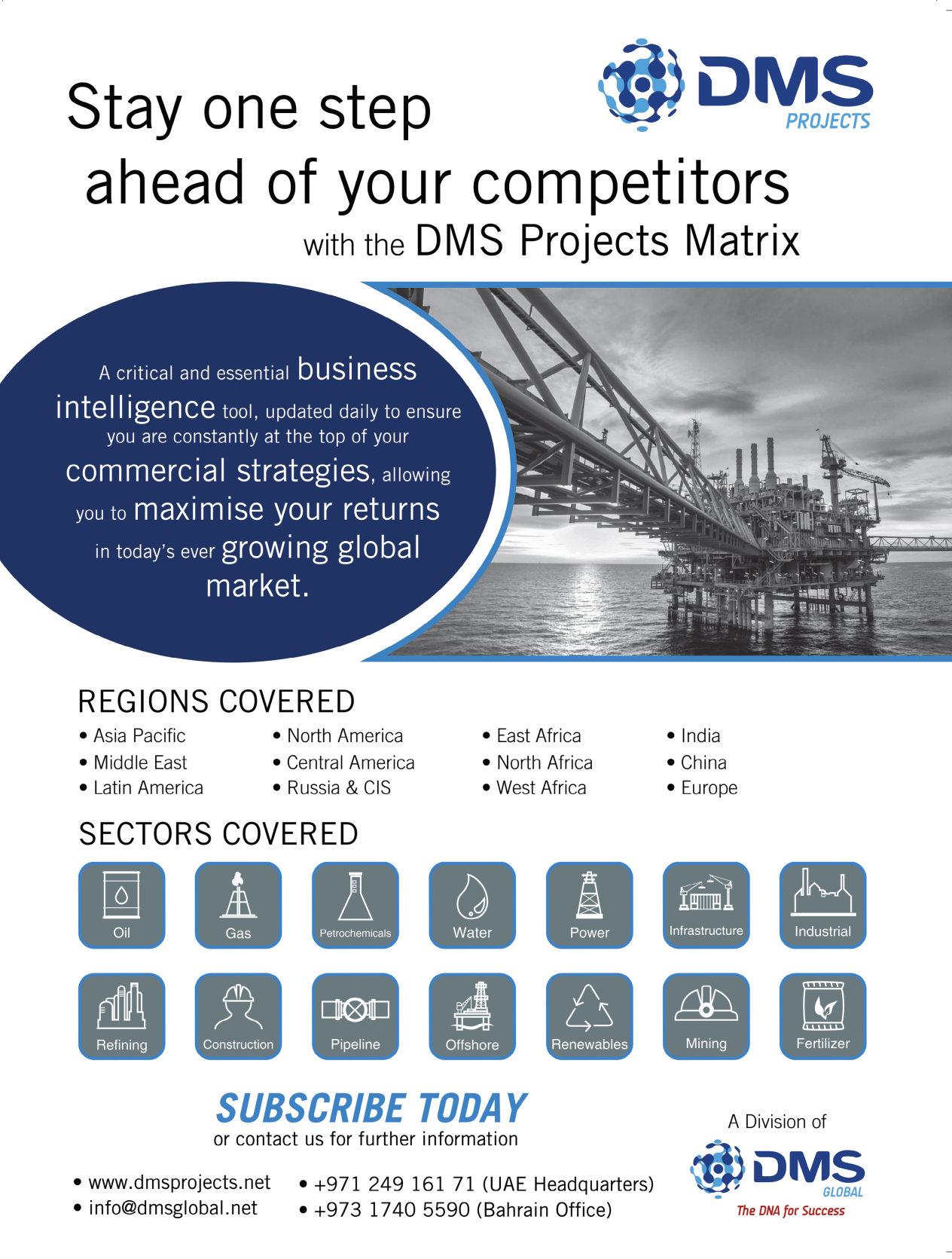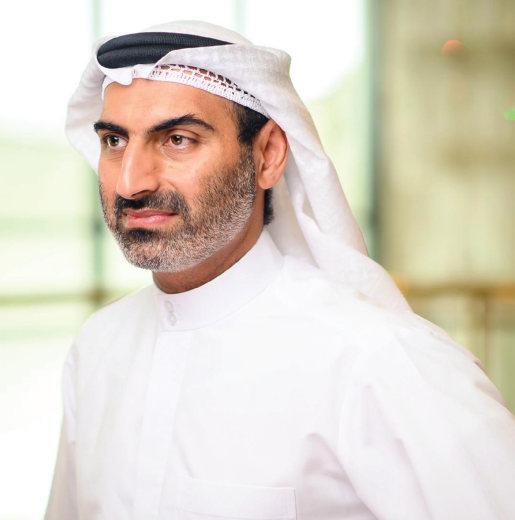
42 minute read
Air Quality
Khansaheb Industries, which has developed a suite of products to improve indoor air quality in HVAC systems, have shared results from their inaugural UAE Indoor Air Quality Audit.
KHANSAHEB INDUSTRIES HAS launched the inaugural edition of the UAE Indoor Air Quality Audit. Collecting responses from 1,000 residents across the UAE, the Audit indicates the attitudes of general consumers toward the importance of air quality at home, in relation to their health, in schools, and in the workplace. The audit found that well over four in five consider air quality important in the home, with those who have good home air quality reporting very good wellbeing and sleeping habits.
A high quality of indoor air quality is more important for UAE residents when choosing a home than the proximity to transport links, distance from a main road, close proximity to schools, whether there is outdoor space, story height, and parking availability. Only 45% of UAE residents consider their indoor air quality to be very good in the home, with only 42% of residents in Dubai stating that they had good indoor air quality.
Abdulrahman Khansaheb, managing director of Khansaheb Industries, commented, “Indoor air quality is an often overlooked but evidently critical topic for UAE residents across the nation. Following the pandemic, those living in the Emirates are wanting to ensure the air they and their children breathe in their home, their workplace, and their schools is of a high enough standard to offer longterm health benefits. The inaugural edition of the UAE Indoor Air Quality Audit demonstrates those concerns clearly and visibly.”
Nearly 91% of UAE residents consider indoor air quality to be important for their daytoday health, with 75% considering it to be very important. Almost twothirds of UAE residents consider good indoor air quality as leading to improved overall wellbeing, and 58% consider that it leads to an improved immune system response. 89% of consumers stated that they would consider indoor air quality when choosing which hospital they would go to.
“Following the results of our initial audit, realestate developers and contractors across the nation need to take indoor air quality into consideration when planning and constructing property in the UAE – be that residential or commercial in nature. Khansaheb consistently advocates for the implementation of the highest quality indoor air standards across the UAE to ensure the health and wellbeing of all. As such, steps taken to improve indoor air quality standards in the UAE are critical. With the implementation of a thorough mandatory regulatory framework for the implementation of ventilation and ductwork in UAE buildings, residents can enjoy higherquality air in their daytoday lives,” added Khansaheb.
The audit comes amid increased public focus on the importance of indoor air quality for health and wellbeing. As UAE residents return to schools and offices following remote working, ensuring indoor air does not represent a vehicle for disease transmission is a key public health priority. Focused on indoor air quality across the home, workplace, hospitals, and schools, findings from the Khansaheb Indoor Air Quality Audit can inform future development of buildings with safe indoor air quality.
Khansaheb Industries, a subsidiary of Khansaheb has been created to recognise the UAE’s evolution into a mature and thriving economy driven by knowledge, innovation, sustainability, and worldclass manufacturing. Their leading product, Spiralite, delivers better indoor air quality over conventional airconditioning systems. ■
Abdulrahman Khansaheb, managing director, Khansaheb Industries.
60 years of a digital Journey
In 1961, Rudolf Loh bought an old weaving mill in central Hesse, Germany and founded Rittal. The idea: standard enclosures in standard production, immediately available from stock, faster and better than the individually manufactured enclosures for control components of machines at that time.

From steel manufacturer to an international digital company ‐ Rittal celebrates its 60th anniversary.
ALOT HAS happened since then. The standard enclosure is now used in millions of product solutions in more than 90% of all industries worldwide. A small steel manufacturing company has become a global digital enterprise, and is the innovation and world market leader for enclosure technology and IT infrastructure. Rittal solutions are used in control and switchgear engineering as well as in IT and the energy market, in shipbuilding, hospitals and soccer stadiums. Around 58 subsidiaries handle sales and service of Rittal products worldwide.
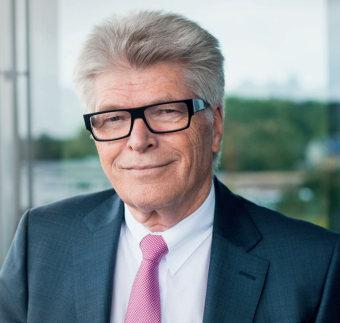
From the system to the cloud
In the course of industrial automation, Rittal developed the enclosure into an entire enclosure system. The products were intended to solve several of the customers' problems at once, for example with climate control and power distribution solutions. To this day, the company and corporate culture are characterised by the system. Energy efficiency, climate change or failsafe power distribution are highly relevant topics, where Rittal makes its customers successful with innovative solutions for industrial and IT infrastructures of all sizes.
In parallel, Rittal built up Eplan, now one of the world's leading software providers for electrical engineering. Together, Eplan and Rittal now optimise and industrialise the entire value chain for customers in control and switchgear engineering. Automation solutions such as machines for processing control cabinets are just as much a part of the programme as sophisticated control cabinet system technology.
Rittal has recently invested more than 250mn euros in the construction of a completely digitally integrated plant in Haiger, which went into operation in 2020. Hundreds of machines and workstations were networked to digitally handle highly complex processes, from ordering to production and logistics. In the course of this, the company created intelligent edge and cloud solutions together with their sister startup German Edge Cloud, tailored to the needs of the industry.
“Rittal is ahead in recognising the evolving needs and trends of the industry,” said Xander Kruger, managing director of Rittal Middle East.
Photo Credit : Rittal
Prof Friedhelm Loh is the owner and CEO of the Friedhelm Loh Group.
People matter in the family business
Rittal, the largest employer in the Central Hesse region, is a family business –responsibility, solidarity and social commitment have always been a top priority. Every year, the employees of the Friedhelm Loh Group – Rittal and its sister companies –jointly donate huge sums to social projects, already totalling well over five million euros. On the occasion of the company's 50th anniversary, owner and CEO Prof. Friedhelm Loh established the Rittal Foundation, which has been supporting projects and institutions in the fields of social welfare, education and culture ever since. "I am very proud of 60 years of success that we have written together with all our employees," said Prof. Friedhelm Loh. "What makes us tick is curiosity, customer orientation, the courage to take risks and the joy of shared success. Because we love the future." ■
Xander Kruger, managing director, Rittal Middle East.
Photo Credit : Rittal
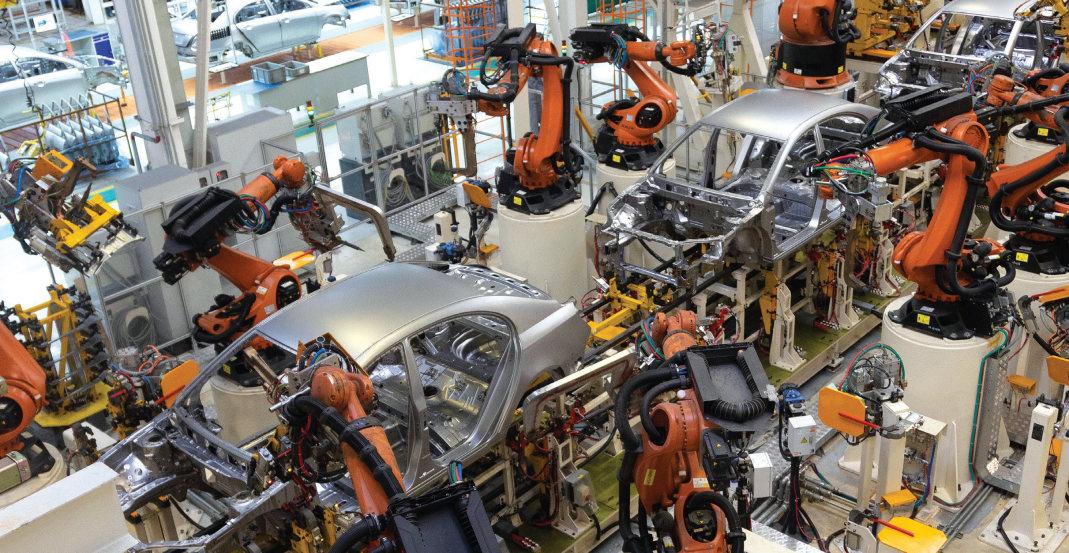
Optimistic about growth
KPMG conducted a global survey of 1,118 executives across automotive and adjacent industries in August 2021.
IN THE NEXT five years, the global auto executives are confident that the market share of electric vehicles will grow by 2030, according to a new survey by KPMG. The survey also found that the expectations for the EV market are based on when EVs will reach cost parity with internal combustion engines. Startups are raising billions, and executives believe tech companies will enter the market. The rise of new entrants and the shift to everything digital as the technology and automotive industries are converging, are leading to new alliances and new entrants.
While at the same time, supply chain issues and labor shortages are of great concern. KPMG’s 22nd Annual Global Automotive Executive Survey of 1118 executives across automotive and adjacent industries found that 53% are confident that the industry will see more profitable growth, compared to just 38% who are concerned about profit prospects. The survey, which included 372 CEOs, found that executives’ confidence extends to other areas as well, including the industry’s ability to withstand the next great disruption.
“It’s encouraging to see such widespread optimism about the growth prospects for the auto industry,” said Gary Silberg, global head of Automotive at KPMG. “Car manufacturers have rarely faced such an array of technological and businessmodel changes since the dawn of the automotive industry 130 years ago. Flying taxis, cars by subscription, ubiquitous and fast EV charging stations, bigtech car entrants –these are some of the developments we can expect in the next 10 years.”
However, the executives are worried about a range of issues affecting the supply chain, including the price and availability of semiconductors, steel, rare earth elements and other scarce materials.
“There are urgent questions executives need to answer right now: Have they learned recent lessons to build more resilient supply chains and address labor shortages?”, Silberg said. “Auto manufacturers are competing for talent not only among themselves but also against other industries. We will likely see executives taking lots of time in the coming years to problem solve these risks.”
Executives expect the market share of EVs to grow dramatically, though there is no consensus about what market share it will capture. EVs’ popularity may depend partly on significant investments in DC fastcharging infrastructure; 77% of executives expect consumers to require charge times under 30 minutes when traveling. The survey also found that expectations for the EV market are based on when EVs will reach cost parity with internal combustion engines. Most believe EVs can be widely adopted without government subsidies (77%), but the majority still support such programs (91%). Furthermore, 78% of executives agree that there will be a fundamental change in how vehicles are purchased in the coming years, saying that most will be sold online by 2030. And about threequarters predict that more than 40% of vehicles will be sold directly by automakers to consumers, bypassing dealers.
With the move to digital commerce, executives expect that automakers will monetise the vast amount of data they will collect; 43% expect that automakers will sell data to auto insurance companies. ■
MB Crusher acknowledges importance of size grading in a quarry
WITH QUARRIES PROVIDING a whole range of important resources, and the diverse differences between each individual location, MB Crusher has assessed two key problems that commonly appear on quarrybased job sites.
Operators struggle to manage the extracted materials (after extraction has taken place) and productivity rates throughout the job site timeframe.
Within its fleet, MB Crusher offers a range of solutions to these key problems increasing the quarry’s profitability and transforming expenses into advantages, in spite of the type of material extracted.
The sandstone range tackles the mixture of sizes that debris in sandstone quarries come with. The MBS18 screening bucket, equipped commonly on a Kobelco SK220SD, separates coarse materials from fine materials, providing clean material that’s readytouse as foundation for new roads or in the construction industry. The excavator’s hydraulic systems allow the units to work on a range of machines.
On chalk quarries, the MBR900 drum cutter can excavate smallersized materials. The smaller aggregates allow the operators to immediately send the materials to the stationary crusher plant and increase hourly production. The finish product is then able to be sold as a base for plaster.
The BF120.4 crusher bucket has been deployed in copper mines, working day and night to crush inert material before it’s screened by the MBS18 screening bucket. The resulting material is ideal to cover holes that explosives create, with amore focused an efficient explosion available. Larger materials can then be used to build roads inside mines.
In coal quarries, MB Crusher’s MBHDS320 shaft screener buckets have been deployed to produce between 55 and 66 tons per hour of the size needed to be used in power plants.
MB Crusher’s attachments are optimal for reducing waste and operational costs, with versatile attachments allowing for diverse applications.

Size grading is a key component of quarry assessment.
Photo Credit : MB Crusher
All-mechanical Cat dozer delivers easy maintenance and faster investment return
THE LATEST ADDITION to Cat’s slate of dozers, the D8 GC, is designed to fit a variety of business needs while delivering easy maintenance and faster return on equipment investment.
The fullymechanical unit can deliver an up to 10% reduction in owning costs compared to the D8T.
The D8 GC is powered by the Cat 3406C DITA engine with a threespeed powershift transmission and Caterpillarexclusive torque divider ensuring that more useable power gets to the ground for allround performance.
The unit comprises all‐mechanical components.
Individual radiator cores can be quickly replaced, while new Cat hydraulic and power train oil filters offer extended service intervals to save time and money.
An elevated sprocket helps make maintenance easier with modular components making for easy removal and installation for service.
Opting for solely mechanical components ensure the unit comprises a robust power train, guaranteeing easy of diagnosis and maintenance, even in remote locations during deployment.
For a lower initial purchase price,
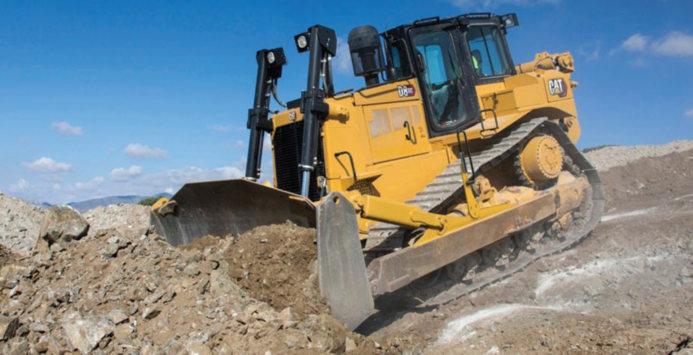
Photo Credit : Cat customers can opt for a General Duty undercarriage, simplified fixed ripper or more based 4LED light pacakage.
A Desert/High Abrasion package is available factoryready to enhance machine performance in sandy or abrasive underfoot conditions, with a cooling machine optimised for highdebris environments and easy access for cleanout. The speciallycoated fan and radiator help rest abrasion and a core protection grid helps keep debris out of major systems. An additional high ambient fluids package handles heat, with a sealed bottom guard and added seals keepign fine abrasive particles out of components.
D8 GC can also be optimised for cold weather work, with features like heavyduty batteries, arctic undercarriages and thinner oil for better lubrication in extreme conditions.
Cabs or canopies can be fitted to the D8 GC, each with integrated Roll Over Protective Structures (ROPS/FOPS). Heavy Duty undercarriages can be implemented for aggressive or high impact applications.
Cat D8 GC’s dozing performance and competitive fuel efficiency help contribute to lower owning costs and a quicker return on equipment investment.
Disruptive technologies in construction
Companies that employ technological initiatives now to be future-ready are predicted to win more contracts and achieve a higher rate of profitability, according to a GlobalData report.
Cloud computing offers the builder the ability to perform design related actions, remotely from any part of the world.
ACTIVE ENGAGEMENT WITH
suppliers, subcontractors and the local community is an integral part of today’s construction company functions. Construction companies that concentrate and stay relevant in areas such as cloud computing, artificial intelligence (AI), digital twins and the internet of things (IoT) tend to show their ability and willingness to adapt these technologies that are made for the future, the GlobalData research states. Companies that employ these initiatives now to be futureready, are predicted to win more contracts and achieve a higher rate of profitability, says GlobalData in its report.
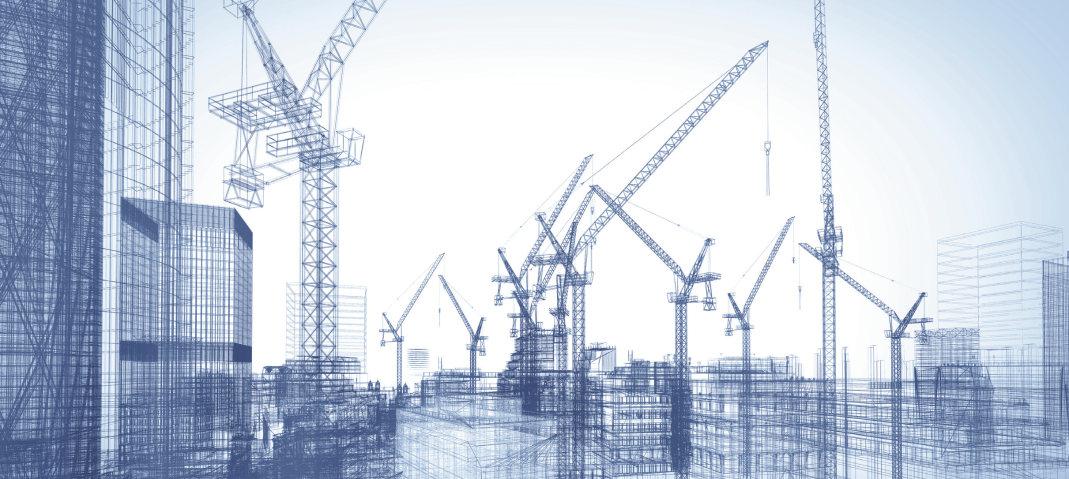
Cloud computing in construction
Monitoring devices have been vastly used to generate and compute vast amounts of data at any given modern construction site. These sets of data have been used by the companies within the industry to gain insights and realtime numbers from a live building site, to take actions based on facts. Profitability has obviously been the driving force behind the surge, and cloudbased computing has provided a platform for this to be conducted efficiently.
Cloud computing offers the builder the ability to perform design related actions, remotely from any part of the world. With the advent of mobile devices, access to building models and collaborating with the onsite team has been faster than ever before. Architects and engineers are now able to access data to provide inputs, address project complications and provide solutions faster.
Professionals can mark up drawings and plan while simultaneously being able to access project documents, permits and build status. Cloudbased technologies have adapted software to builder specific details, enabling greater productivity.
Digital twins enabling faster decision making
Digital twins are scaled digital models of a project that gathers realworld information to simulate construction. The technology uses aids like sensors, lasers, aerial photography and other wireless equipment to amass sets of data to create the simulation.
Digital twins enable the usage of realtime data to predict potential failures related to structure, electronics in buildings and simulate aerodynamics in skyscraper construction.
Artificial Intelligence in construction
AI is revolutionising the approach made by construction companies towards key areas of projects such as logistics and safety. AIfuelled telemetrics are used to predict maintenance requirements, fleet management and general worksite enhancements.
AIbased software can monitor sources to apply predictive analytics to raise potential issues at the job site that needs addressing. Potential safety risks are mitigated using advanced technology to track usage of protective measures, which are highly essential for projects to run smoothly, without compromising on worker casualties.
Tagging devices that are based on technologies derived from the Internet of Things (IoT) can accurately measure equipment ware and fuel consumption thus providing all the essential tools for a worksite manager to make calls that define productivity. ■
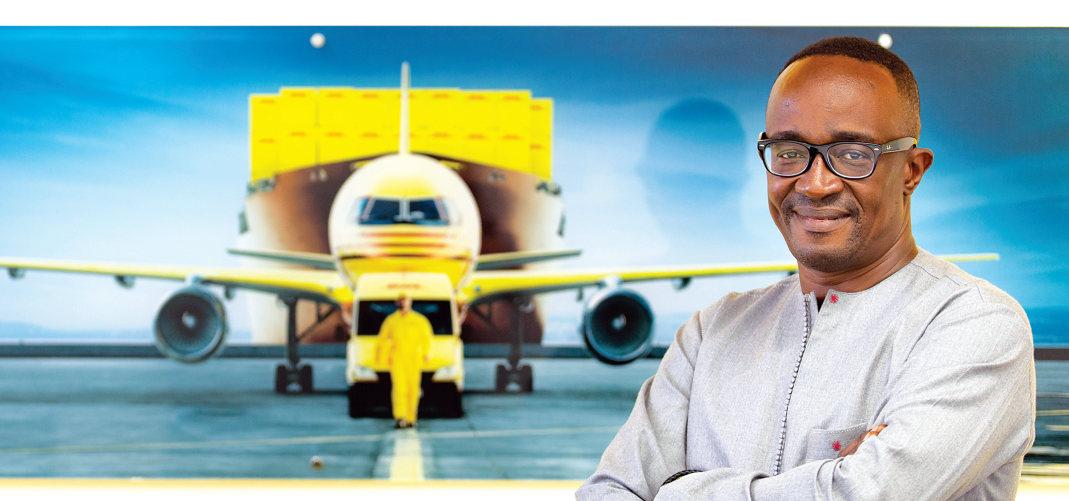
GoGreen solutions for logistics
An interview with Amadou Diallo, CEO, DHL Global Forwarding Middle East and Africa, on developing a solar project with TotalEnergies.
DHL GLOBAL FORWARDING, the leading provider of air, ocean and road freight services, and TotalEnergies have signed a contract for a solar energy project in Dubai. It is in continuation of their Strategic Cooperation Agreement signed in 2019. The project complements Deutsche Post DHL Group’s sustainability roadmap to achieve zero emissions logistics from 2050 onwards. In addition to supplying the sites with solar power, eight electrical vehicle charging stations will also be installed. Thus, DHL Global Forwarding contributes to the Group's goal of electrifying 60% of its fleet by 2030.
Amadou Diallo, CEO, DHL Global Forwarding Middle East and Africa, sheds light on the partnership and what it entails.
TRME: How is DHL’s partnership with TotalEnergies contributing towards sustainability and green energy targets as well as enabling cost reduction for DHL and the country, in general?
Amadou Diallo (AD): DHL Global Forwarding’s partnership with Total Energies is a major step in its sustainability journey and complements our group’s sustainability roadmap to achieve zeroemissions logistics from 2050 onwards.
This partnership will solarise eight of DHL’s sites in Dubai to cover the equivalent of over 46,000sqm of photovoltaic panels, saving more than 6,000 tonnes of CO2 in the first year. The whole solar system will produce over 14,000 MWh per year, enough energy to power over 16,000 homes yearly in the UAE. Moreover, eight electrical vehicle charging stations will also be installed – which contributes to the group’s goal of electrifying 60% of its fleet by 2030.
Nearly 85% of the solar modules for the project are recycled and are exclusively produced in landfill free certified factories. All these contribute to making the entire product cycle more sustainable and saves more than 150,000 tonnes of CO2 over the contract duration. In short, there are significant impact from this partnership towards enabling the cost savings for DHL and furthering the sustainability mandate.
TRME: Were there any significant challenges faced in realising the full carbon efficiency of the transport fleet or barriers in the deployment of solar energy? How did you overcome them?
AD: Sustainability is a core component of our corporate strategy at DHL Global Forwarding because it has become a key differentiator in business today – and one that serves a very positive purpose. Over the years, we have repeatedly redefined logistics, from introducing the industry’s first green product to becoming the first logistics company to commit to a zero emissions target.
If we are to tackle the bigger challenges on carbon efficiency of the fleet or deployment of social energy, then global solutions are needed. Joint efforts make for harmonised conditions, and they prevent distortion of competition. Let me use sustainable synthetic fuels as an example. If they were already mature for market, they could help reduce greenhouse gas emissions in aviation.
To this end, DHL Global Forwarding introduced the Sustainable Marine Fuel (SMF) service for ocean freight as part of its sustainability strategy. Initially launched for LessthanContainer Load (LCL) shipments, this was later extended to FullContainer Load (FCL) shipments. Offering the option of using SMF is another step towards cleaner and greener ocean freight by reducing its environmental footprint.
Moreover, DHL Global Forwarding is also funding the purchase of sustainable aviation fuel (SAF) via United Airlines and helping decarbonise the airfreight cargo industry. As part of the EcoSkies Alliance programme, the company is one of the programme participants that contributes towards SAF purchases of 3.4 million gallons (12.87m litres) this year to reduce emissions. The higher the share of the SAF in total, the lower the carbon emissions. As vessels and airplanes exhaust all in the same atmosphere, we at DHL Global Forwarding are following a massbalance approach.
DHL Global Forwarding has also played a pivotal role in largescale solar energy projects in the region, such as the Mohammed Bin Rashid Al Maktoum Solar Park Project in Dubai. The DHL Industrial Projects team was instrumental in transporting breakbulk cargo, ensuring worldclass safety and compliance standards. This involved transportation of electrical transformers, with the heaviest weighing up to 250 tons, from China and Germany to Dubai’s Jebel Ali Port, where they were offloaded onto trailers for a 110kilometre journey to the project site.
That is why we will be intensifying our involvement in related initiatives, while driving crosssectoral dialogue with the aim of developing a global strategy and global standards. Only by joining forces can we move forward in a truly sustainable way. This partnership with TotalEnergies represents steps in that direction.
TRME: Can you please shed some light on other DHL projects in the region for green energy?
AD:DHL’s sustainability projects in the region are aligned with our worldwide aspirations as part of our global sustainability mandate. As a company, DHL is committed to sustainability, and it is well embedded in our Strategy 2025. As part of our GoGreen solutions, the teams underwent the certified GoGreen training, where the Middle East team achieved 95% Full Time Equivalent [FTE] certification. This along with the decarbonising the ocean freight shipments and supporting sustainable aviation fuel initiatives are part of the company’s commitment to sustainability.
Globally, we will invest €7 billion until 2030 in clean operations to reduce our emissions from 33 MT in 2020 to under 29 MT by 2030 – despite the expected further growth in our global logistics activities. Also, we plan to electrify 60% of the lastmile delivery vehicles and increase share of sustainable fuels in line haul to >30% by 2030, increase sustainable aviation fuel (SAF) blend to >30% by 2030, design 100% of all new buildings to be carbon neutral, and offer green alternatives for 100% of all core products and solutions.
While these are global targets, each of these initiatives will be mirrored in the region as part of our sustainability initiatives. ■
As a company, DHL is committed to sustainability.
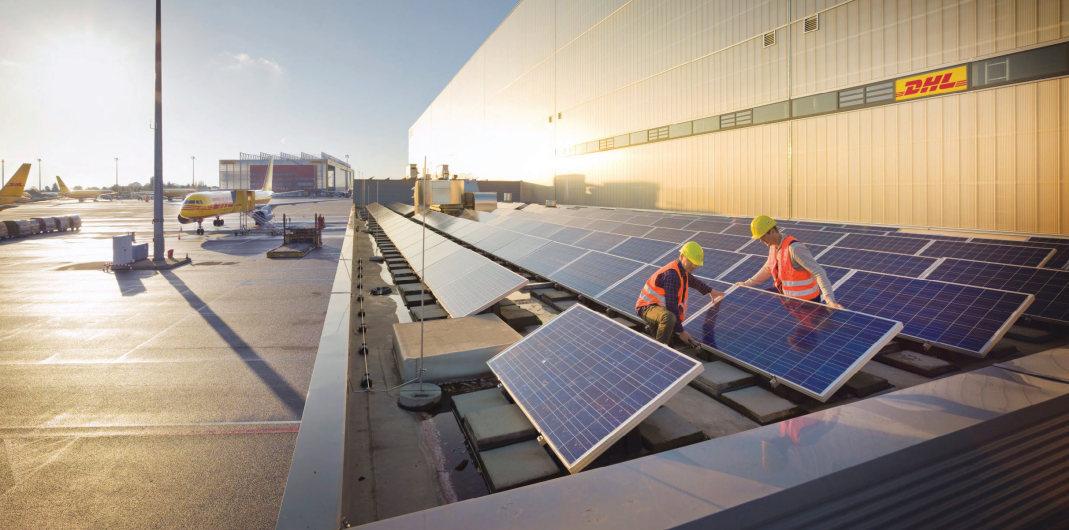
Drones are set to totally transform the Middle East’s warehousing and logistics sectors.
Transforming logistics
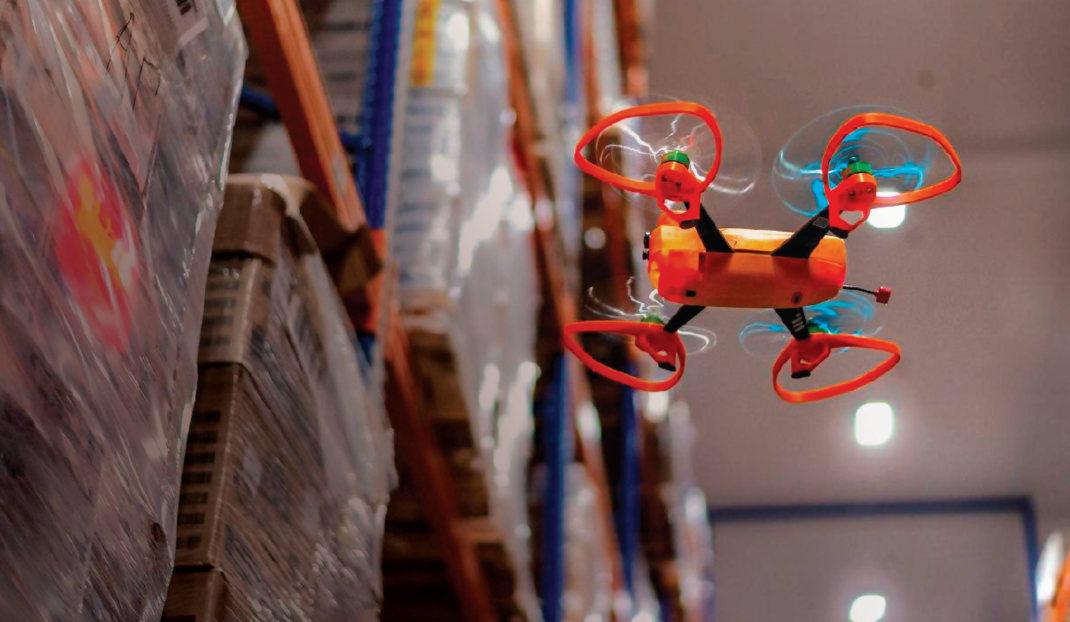
The MENA region is witnessing an increased demand for warehousing automation solutions across industries.
THE COVID-19 OUTBREAK has increased pressure on businesses to improve operational efficiency, reduce costs and to innovate and grow. The pandemic has demonstrated the creativity, resilience and ingenuity of businesses as well as the importance of having a clearly defined automation strategy in place and sticking to it. In the MENA region, the increasing demand and usage of ecommerce and eretail prompted the logistics sector to work towards higher productivity and cost efficiency. Smart solutions that optimise time management, increase productivity and facilitate efficient use of space, critical to warehousing across industries are transforming the lanscape in several ways.
Swisslog, provider of robotic, datadriven and flexible automated solutions had showcased its innovations at Materials Handling Middle East 2021 the region's leading trade fair for warehousing, intralogistics and supply chain solutions. David Dronfield, general manager, Swisslog Middle East, commented, “Swisslog Middle East has received many requests from companies on how they can integrate automation technology into their existing infrastructure in a very convenient and efficient way without disrupting their current business processes. With the pandemic, manual handling processes have become increasingly impractical due to labour shortages, inefficiencies, lack of scalability and congestion in stores/warehouses. We have been working around the clock to help companies integrate this technology to remain viable and profitable, and to install and commission new automation systems.”
“One of our key USP's is the ease with which our solutions can be implemented without impacting existing infrastructure. Our solutions are tailored to our clients' unique business needs and challenges so that they can make this transition as smoothly as possible and reap the benefits of automation. We are working to change the perception of automation in the Middle East and help organisations effectively. We believe that the time is apt for automation in the Middle East,” added Dronfield.
Drones
USbased UVL Robotics is the first company to set up a fully autonomous lastmile delivery drone system in Oman and confirms that it has completed inventory pilot testing with some of the region’s biggest players.
“Drones are designed for the most extreme temperatures and can deliver a package several times faster than a normal courier, thereby reducing the cost and delivery time,” explained Moosa Karim Albalushi, MENA director of UVL Robotics. He was speaking ahead of the Hypermotion Dubai’s Scalex (Supply Chain and Logistics Excellence) conference.
According to the Scalex conference, global disruptors are reenvisioning how we will all travel and move goods and services in the near future and are tearing down boundaries between logistics, mobility, infrastructure, and transport, and looking to replace them with networked, integrated, and intermodal systems.
These innovative logistics automation solutions and effective, smart warehousing can help businesses across the Middle East. Despite the many changes and challenges, sustainability, modernisation, and safety remain the main priorities for the industry to continue building resilience. ■
Is your Covid-secure building a fire safety risk?
As you prepare a building to be Covid-secure, you could inadvertently affect its fire safety and be swapping one hazard for another, states Ashraf Yehia, managing director, Eaton Middle East.
WHETHER A BUILDING is changing its use or layout, including temporary constructions, one must consider whether a new fire risk assessment is needed, according to Ashraf Yehia, managing director of power management solutions provider, Eaton Middle East.
Commercial building owners are all having to think about how they are going to use their space to keep both employees and the public safe. For many, this means the need to change both the layout and how people move through the space.
Most local regulatory bodies state that if an alteration is made to the property the current fire risk assessment must be reassessed. As a result of building layout changes, including many temporary internal and external structures such as protective barriers and screens, we need to think about fire detection and alarm, exit signage and emergency lighting layout.
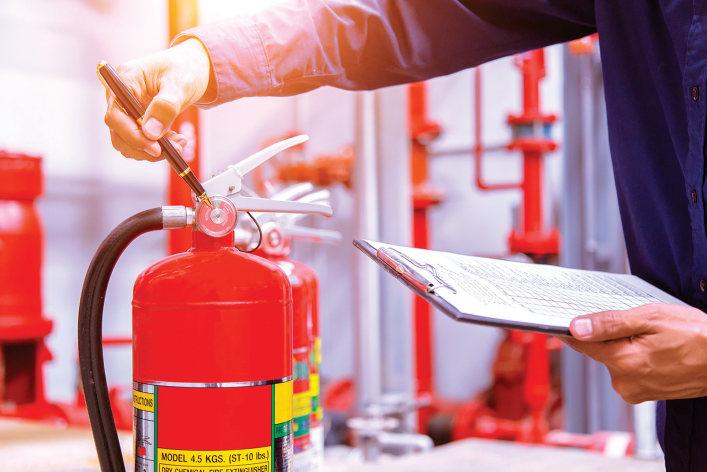
Increased risk
Most changes to a building happening now to minimise the risk from Covid19 are increasing the risk from another hazard –fire. And its a serious risk for the people inside the building and also for the owner who does not consider it.
Escape routes
Most retail and hospitality outlets, for example, have organised one way traffic through their premises either with arrows showing direction of travel or in some cases by blocking off passages with barriers, rope or tape. If there is an emergency where the building needs evacuating this could lead to doubt and confusion and may even prevent people from easily making their way to emergency exits.
This will have implications for emergency lighting and exit signage – some of which may now be in the wrong place for simple and safe evacuation. There should be fire extinguishers on each of these new escape routes.
By specifying and installing fire safety systems with flexibility in mind, and considering adaptive evacuation technology, you are safeguarding the future of your building, yourself and most importantly the people inside.
Warning segregated people
If constructing new rooms, partitioning off areas or changing the layout to segregate people, fire detectors must be installed in each new space and we should ensure that people can hear and /or see fire alarms when they are in them and that they are still compliant.
Risk assessment
Building owners and employers must consider all the risks that employees and the public may face in the spaces that they are responsible for. It may be needed to adapt or change our fire safety systems to mitigate the risk from these new measures.
It may also lead us to consider some of the choices we make, for example, the materials we use for constructing partitions.
A welldesigned fire safety system will have 20% extra capacity and allow some flexibility within its system, but sadly most do not and even those that do will not have considered the extent of change that we need to make to our buildings.
Planning fire safety for change of use
For new build and refurbishment projects it is sensible to plan fire safety systems with flexibility in mind.
By specifying and installing fire safety systems with flexibility in mind, and considering adaptive evacuation technology, you are safeguarding the future of your building, yourself and most importantly the people inside. If we make buildings more adaptable and modular, we need to do the same with all the elements of a fire safety system. ■
Briefly
AVEVA’s New Vision AI Assistant transforms image feeds into insights GLOBAL LEADER IN industrial software, driving digital transformation and sustainability, as launched its latest offering. The Vision AI Assistant 2021 is an image classificationbased analytics tool.
The solution is powered by artificial intelligence and can be integrated with the AVEVA System Platform and Operations Management Interface and AVEVA Insight.
Customers can use video and images from existing generalpurpose cameras and convert them into userfriendly information and timely alerts.
Designed for lowlatency industrial environments, the Vision AI Assistant solution leverages deep learning to train and deploy 24/7 artificial intelligence models to enhance situational awareness to help operators focus on the task at hand without continuously monitoring live camera feeds.
By deploying Vision AI Assistant, organisations will be able to improve operations, quality, and maintenance capabilities across industrial enterprises by using cameras to determine visual anomalies, assess quality, and monitor production. All these improvements contribute to optimising efficiencies and improving sustainability along the way.
Product applications include the integration of standard digital cameras. These can be applied to Vision AI Assistant to ensure quality, by analysing the quality of water treatment fluids and gauging if a hopper is full or empty, or by identifying the defective products on a production line.
Vision AI Assistant can also scan infrared or thermal camera feeds, permitting operations teams to uncover visual incosistencies. By locating compressed air or fluid leaks, the system can help operators to reduce failure and efficiency loss. By spotting hotspots in a data centre, the system can prevent overheating of critical equipment.
The integrated solution is offered as an exclusive extension for AVEVA System Platform purchases made through the AVEVA Flex subscription initiative.

Alimak Group partners with PERI for Scaffold Transportation System
The new system enhances safety and efficiency.
ALIMAK GROUP, IN partnership with PERI, has launched the Alimak STS 300 Scaffold Transportation System.
The scaffolding product for the construction industry is making the scaffolding process as efficient and safe as possible. The Alimak STS 300 Scaffold Transportation System, is an innovative system offering a range of features which enhance safety in combination with efficiency. It provides scaffolders more productive erection and dismantling time, as well as better ergonomics, and it also supports horizontal movement on the ground level which makes it more user friendly and efficient.
The Alimak STS 300 is designed to fit perfect PERI UP scaffold. PERI UP scaffold secures scaffolders are always in a guarded position when installing or dismantling scaffold. Lifting tools do negatively impact this safe position of scaffolders, except when using the Alimak STS 300.
“We are very pleased to have this partnership with Alimak Group. The Alimak STS 300 will enable scaffolders to improve their entire logistic process, starting from the warehouse towards the jobsite and backwards. Due to the innovative approach, waiting times decrease and it is easy to assemble and dismantle scaffolding with a team of two scaffolders,” said Thomas Imbacher, responsible board member for innovation and marketing of PERI AG.
Alimak STS 300 Scaffold Transportation System aims to provide easy handling and transport, increased productivity, improved safety, improved ergonomics and better working conditions for scaffolders. It also provides a digital channel – My Alimak covering online manuals, elearning and parts Webshop.
Initially, the Alimak STS 300 will only be available in Germany but will be gradually rolled out to more markets, globally.
MYCRANE platform adds universal crane selection tool
THE DIGITAL PLATFORM for the search and selection of cranes, MYCRANE, has commenced the testing of a new, universallyaccessible crane selection tool which will be offered to the lifting industry at no cost.
‘MYCRANE Selector’ is the latest innovation from the Dubaibased MYCRANE, which was the first company to launch a convenient and timesaving online solution for crane rental services.
The new tool will accommodate the quick and easy identification of what crane should be used for what application, displaying the crane’s capacity and optimum configuration to allow for an informed decision during crane selection.
Director and MYCRANE founder, Andrei Geikalo, explained, “Our MYCRANE Selector tool will simplify the life of all those involved in the lifting industry. Our MYCRANE Selector tool will simplify the life of all those involved in the lifting industry. Our users simply need to insert the radius, the height of the lift, the dimensions and weight of the cargo, and they will get the right crane for their lift.”
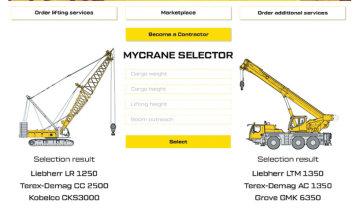
Photo Credit : MYCRANE
The tool will enable optimal crane selection.
Polypipe launches drainage system with noise reduction
POLYPIPE MIDDLE EAST, a sustainable water and climate management solutions manufacturer has launched Terrain Q, a polypropylene, easytoinstall highperforming drainage system incorporating multilayer technology for the Middle East.
Terrain Q can be used for a variety of commercial and residential high and lowrise buildings, designed to offer a singlesource solution for acoustic drainage. This is alongside the region’s marketleading terrain drainage systems from Polypipe Middle East, including Terrain PVC and Terrain FUZE. Terrain Q adds to the company’s commercial drainage portfolio and offers specifiers and installers an engineered
Photo Credit : Polypipe Middle East
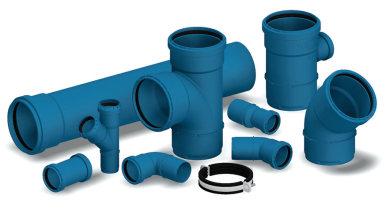
Due to an anti‐fouling additive, the bore is kept clear and resistant to deposit build‐up which helps to reduce noise levels within the system. solution that offers both noise reduction and fire retardancy benefits. The system includes a blue external layer made from PP+UV+RF, which provides resistance to attack from UV radiation, fire and impact damage. The black intermediate layer comprises a mineralreinforced plastic, which enables high stability, noise insulation and fire resistance, and the final white internal layer is made of PP+AF, providing high chemical and abrasion resistance and resistance to hightemperature waste up to 97 degrees celsius.Due to an antifouling additive, the bore is kept clear and resistant to deposit buildup which helps to reduce noise levels within the system.
According to Polypipe, Terrain Q has been engineered to meet the industry’s acoustic and fire requirements. The system has been tested and certified to EN 14366 ‘Laboratory measurement of noise from wastewater installations’, EN 13501 ‘Fire classification of construction products and design types’ and EN 1451 ‘Plastic pipes and fittings for soil and waste’. The range is available in a variety of sizes to suit project requirements and when matched with Terrain’s other drainage systems, a bespoke engineered solution can be found for each building type.
NSK unveils Super-TF spherical roller offer long service life
NSK, A TOKYO based bearing manufacturer unveils its new bearing product with improved durability. The bearings are said to have increased service life, especially in contaminated environments such as steel production facilities. The bearings are manufactured from a specially developed, proprietary material and are able to increase service life and uptime significantly. SuperTough (SuperTF) bearing steel is a proprietary material that is not only ideal for very high load applications but has a proven ability to reduce surfaceoriginated flaking from the contaminated lubricant, according to NSK. The SuperTF material is DNV GL certified and improves the basic dynamic load rating in roller bearings by 23%, equating to an effective doubling of fatigue life in comparison with bearings made from standard steel.
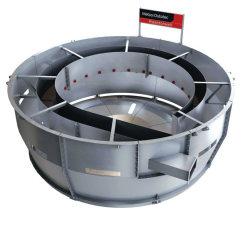
Metso Outotec introduces Reactorwell feed system
METSO OUTOTEC, IS one of the global frontrunners in sustainable technologies, endtoend solutions and services for the aggregates, mineral processing and metal refining industries globally.
The company has announced the launch of ‘Reactorwell’, a new generation feedwell, that is set to maximise thickener and clarifier The Reactorwell achieves performance while minimising significant improvements in thickener flocculant consumption and bringing significant operational and clarifier performance as it utilises maximum settling area due to its high exit symmetry. cost efficiencies.
Metso Outotec saus that the firstclass feed system features high solids retention and mixing efficiency. It eliminates feed shortcircuiting and offers low shear for ideal floccule growth and even discharge symmetry. The feed system provides optimum feed conditioning for thickeners and clarifiers. Thanks to its many benefits in addition to low flocculant usage, the Reactorwell is a part of Metso Outotec’s sustainable Planet Positive portfolio.
Brian Berger, vicepresident, thickeners and clarifiers at Metso Outotec said, “It provides improved overflow clarity as well as higher underflow density. Additionally, the Reactorwell allows better thickener operability with an improved response to process changes.”
The Reactorwell consistently achieves high unit area throughput and the improved Autodil performance minimises the need for pumped dilution, leading to a lower total cost of ownership.
Photo Credit : Metso Outotec
Briefly
Fieldwire joins Hilti to establish jobsite management platform HILTI GROUP, ONE of the global leaders in innovative tool and fastening solutions, technology, software and services for the commercial construction industry, has entered into an agreement to acquire Fieldwire, a San Franciscobased construction technology company for an approximate US$300mn.
The strategic acquisition will bring together Fieldwire’s bestinclass product and Hilti’s global brand and market reach to help drive productivity at contractors and on construction sites. Fieldwire provides a leading platform for jobsite management that powers more than a million jobsites worldwide.
With Hilti’s support, Fieldwire will expedite the work on building the preferred digital solution for construction professionals in the market. Not only will all current Fieldwire team members be invited to stay with Hilti Fieldwire under the continued leadership of the two founders, but additional efforts will also be made to significantly grow the team.
“The acquisition of Fieldwire will accelerate Hilti’s capability to deliver productivity to our customers through software solutions. Hilti has been investing in digital solutions for construction professionals. We intend to continue investing in the platform to create the next market leader in construction project management software.” said Christoph Loos, CEO of the Hilti Group.
In 2017, Hilti was part of Fieldwire’s Series B financing round. As an early investor, Hilti already has a sound working relationship with Fieldwire, and together the companies can now strive towards making construction jobsites around the world simpler and more productive. The acquisition is expected to close in Q4 2021 and is subject to standard closing conditions, including regulatory approvals.
“With Hilti, we have found a partner that truly shares our values and at the same time allows us to speed up our product development for our customers in new and existing markets. We are thrilled to be joining the Hilti Group.” said Yves Frinault, Fieldwire’s cofounder and CEO.
Project Databank
Compiled by Data Media Systems
Project Focus
Compiled by Data Media Systems
Name of Client
Estimated Budget (US$)
Contract Value ($ US)
Award Date
Main Contractor
Facility Type
Status
Location
Project Start
End Date
Cairo Governorate NAT - The National Authority for Tunnels
1,300,000,000
739,000,000
2014-Q4
AVIC International China Railway Eryuan Engineering Group (CREEC)
Mass Transit Systems
Construction
Various, Egypt
2012-Q1
2022-Q1
Background
Cairo Governorate is planning to build an electric train line between Cairo and Egypt's new administrative capital, Al-Salam. The railway line will extend over a length of 67 km, with 11 stations. The future rolling engine will be able to accommodate 340,000 passengers per day. The project is expected to generate savings of 2.3 billion Egyptian pounds (around US$130mn) in fuel subsidies related to car traffic per year for the state. It will also reduce traffic on a motorway linking the capital to the Suez Canal in the port city of Ismailia, northeast of Cairo, by 30%.
Project Status
Date Status
Nov 2021 The construction work in the Heliopolis station is ongoing
Sep 2021 50% of the electromechanical works have been completed. 92% of the civil work has been completed
Aug 2021 90% of the railway lines works have been completed.
Jul 2021 88% of the construction work at the station has been completed.
Project Scope
The scope of the project involves: • Line will consist of 11 stations located in the cities of Salam, Obour, Shorouk, Mostaqbal, Robeiky, and the New Administrative Capital, stretching over 67.8 kilometers. Some 7.5 kilometers will be in the form of a bridge, while 0.3 kilometers will be in the form of a tunnel. The speed of the train will be 120 km/h. • The line will start from Adly Mansour Station that is reached by the third metro line, and at Robeiky will be divided into two branches. One will head north in parallel to the Regional Ring Road to the 10th of Ramadan City and the other will head South to the New Administrative Capital.
The scope of project includes • Signalling • Communication • Control • Electricity systems • Supply 22 trains • Civil works • Bridging works • Tunnel works • Railway bridging work • Train maintenance workshop
Project Finance
Project Databank
Compiled by Data Media Systems
Project Name Country City Facility Budget Status (US$'000)
AAVB - Grand Theater of Rabat Morocco Rabat Theatre/Entertainment/ 141,000 Construction Leisure Facilities Aksal Group - Wessal Capital - Rabat Morocco Mall Morocco Afourer Malls/Retail Outlets 110,000 Construction Alexandria Port Authority - Dekheila port - Container Terminal Egypt Alexandria Port 400,000 Feasibility Study Algeria Ministry of Public Works - ANA - Djen Djen Port to Algeria Jijel Province Roads 2,000,000 Construction El Eulma - Connection to East-West Highway Algeria Ministry of Public Works - Bejaia Port to Ahnif - Algeria Bejaia Roads 1,185,000 Construction Connection to East-West Highway Algeria Ministry of Public Works and Transport - AGA - Algeria East-West Roads 77,000 Construction Toll Stations On The East-West Highway Algeria Ministry of Youth and Sports - Baraki Stadium Algeria Baraki Sports Stadium/ Facilities 380,000 Construction Algeria Ministry of Youth and Sports - Algeria Douera Sports Stadium/ Facilities 250,000 Construction Douera Sportpark Stadium Algeria Ministry of Youth and Sports - Oran Olympic Stadium Algeria Oran Sports Stadium/ Facilities 142,000 Construction Algeria Ministry of Youth and Sports - Algeria Tizi Ouzou Sports Stadium/ Facilities 357,000 Construction Tizi Ouzou Abdelkader Khalef Stadium AQS - Bellara Steel Plant Algeria Jijel Province Steel Plant 2,000,000 Commissioning BANK OF AFRICA - Mohammed 6 Tower Morocco Rabat Sale Hotels 380,000 Construction Haute Mer Cairo Governorate - Cities of Al-Salam - New Capital Monorail Egypt Various Mass Transit Systems 1,300,000 Construction Casa Transports - Casablanca Tramway - Overview Morocco Casablanca Railway 8,700,000 Construction Casa Transports - Casablanca Tramway - Tram Line 3 Morocco Casablanca Railway 219,000 Construction Casa Transports - Casablanca Tramway - Tram Line 4 Morocco Casablanca Railway 219,000 Construction CMMM - Boumadine Polymetallic Mine Morocco Draa Tafilalet Exploration 120,350 Construction EGSA Oran - Ben Bella Airport Extension - Terminal 2 Algeria Oran Airport 156,000 Construction EMA - Algeria Metro Extension C1 Ain Naadja - Baraki Algeria Baraki Railway 120,000 Construction Emarat Dzayer Group - Groupe Sider - Steel Plant Algeria Annaba Steel Plant 1,600,000 Pre-FEED Emmerson - Khemisset Potash Mine Development Morocco Khemisset Potash 250,000 Feasibility Study EPO - Oran Port Extension - Overview Algeria Oran Port 104,000 Construction FERAAL - Gara Djebilet Iron Deposit Project Algeria Gara Djebilet Iron Ore 15,000,000 Feasibility Study GVG Real Estate Development - Emirates Touristic Resort Morocco Marrakech Residential Development 136,130 Construction Jamjoom Pharma - Ophthalmology Drug Factory Algeria Adrar Pharmaceutical Factory 130,000 EPC ITB LafargeHolcim Maroc - Souss Massa Cement Plant Morocco Taroudant Cement 350,000 Commissioning Managem - Tizert Copper Project Morocco Tizert Copper 135,000 Feasibility Study MEHAT - Taparura Project Tunisia Sfax Mixed-Use Development 457,077 EPC ITB METLW - Dakhla Atlantique Port Morocco Dakhla Port 996,000 Engineering & Procurement METLW - M'dez Dam Morocco Sebou Dam 165,000 Construction METLW - Tiznit-Dakhla Expressway Morocco Various Roads 1,000,000 Construction Ministry of Housing, Utilities & Urban Communities - Egypt New Capital Mixed-Use Development, 3,000,000 Construction Central Business District (CBD) Commercial Buildings Ministry of Industry - Mohammed 6 Tanger Tech City Morocco Tangier Industrial Park 10,000,000 Engineering & Procurement Ministry of Public Works and Transports - Algeria El Hamdania Port 3,300,000 Engineering & El Hamdania Sea Port Development Procurement Ministry of Public Works And Transports - Port Algeria Various Port 8,190,000 Engineering & Master Plan - Overview Procurement Ministry of Transport - (Saudi Arabia - Egypt) King Salman Causeway Egypt Sharm El Sheikh Causeway 4,500,000 Feasibility Study MINISTRY OF TRANSPORT - Enfidha Deep-Water Port - Overview Tunisia Enfidha Port 1,480,000 Engineering & Procurement
Project Databank
Compiled by Data Media Systems
Project Name Country City Facility Budget Status (US$'000)
MINISTRY OF TRANSPORT - Enfidha Deep-Water Port - Tunisia Enfidha Port 1,400,000 EPC ITB Phase 1 - Container Terminals Ministry of Transport - SMLS - Light Rail Transit (LRT) Tunisia Sfax Railway 283,000 Design Mountain View - Sisban - NUCA - Mountain View I- Egypt New Cairo Residential Development 3,600,000 Construction City Residential Units Nador West Med Company - Nador West Med Port Complex Morocco Nador Port 1,025,000 Construction NAT - Cairo Metro - Line 3 - Phase 3 Egypt Cairo Mass Transit Systems 1,800,000 Construction NAT - Cairo Metro - Line 3 - Phase 4 Egypt Cairo Mass Transit Systems 1,200,000 Construction NAT - Cairo Metro - Line 4 - Phase 1 Egypt Cairo Mass Transit Systems 4,780,000 Construction NAT - Cairo Metro - Line 6 Egypt Cairo Railway 5,300,000 Feasibility Study Onda - Expansion Of Mohammed 5 Airport - Overview Morocco Casablanca Airport 286,200 Construction SCZone - El-Tor Port - Multi Purpose Terminal Egypt El-Tor Port 100,000 Feasibility Study Sonatrach - Integrated Phosphate Project Algeria Various Phosphate 6,000,000 Feasibility Study Sonatrach - Skikda Export Terminal Expansion Algeria Skikda Port 454,000 Construction Spimaco - Pharmaceutical Factory Morocco Bricheid Pharmaceutical Factory 41,000 Construction Tekcim - El Jadida Cement Plant Morocco El Jadida Cement 272,240 Engineering & Procurement Wessal Capital - Wessal Bouregreg Morocco Rabat Mixed-Use Development 900,000 PMC WOTECH - Medium Density Fibreboard (MDF) Plant Egypt Bahira MDF Plant 228,000 Engineering & Procurement
AD PORTS GROUP has announced that Mugharraq Port, a strategic port located in the Al Dhafra Region, has been recognised as an international port facility.
Issued under the provisions of the International Code for the Security of Ships and of Port Facilities (ISPS Code) by the UAE’s Ministry of Energy and Infrastructure, the port has long served as a leading maritime facility that provides a host of offshore, project/oil and gas, general cargo, logistics support, bulk and breakbulk handling services.
With the new certification, Mugharraq Port can now receive international and local vessels including container feeders, bulk and breakbulk carriers, mobile offshore drilling units, tugboats, chemical tankers, offshore support vessels, passenger ships and highspeed cargo crafts.
Saif Al Mazrouei, head of Ports Cluster, AD Ports Group, said, “It is our great pleasure to announce that Mugharraq Port, one of the highperforming ports located within the Al Dhafra Region, has been officially recognised as an international port facility.
“This achievement will greatly accelerate the port’s potential in securing interest from the world leaders of industry, particularly those involved in the global energy market, while simultaneously
opening up new opportunities in other Mugharraq industries and segments for us to Port is target. undergoing extensive expansion. “We look forward to reinforcing Mugharraq Port’s logistical capabilities even further, as well as cultivating the port’s reputation not only as a vital maritime facility in the Middle East but also its footprint within global trade.” Mubarak Al Mazrouei, port director, Al Dhafra Region, ““This is a reflection of AD Ports Group’s efforts in recent years to devise and advance a master plan for the modernisation of Al Dhafra region’s ports, which has witnessed several infrastructure enhancements catering to both commercial and recreational maritime activities.” AD Ports Group is close to completing an extensive expansion project aimed at enhancing Mugharraq Port’s infrastructure and service capabilities to ensure it is better positioned to support offshore and mega projects related to the oil and gas field. The infrastructure improvements introduced include the extension of the quay wall up to 480 metres with additional berths, deepening of the facility’s depth to eight metres, as well as the development of additional RoRo ramps to a total of six and extra berths designed to support heavy lift operations.
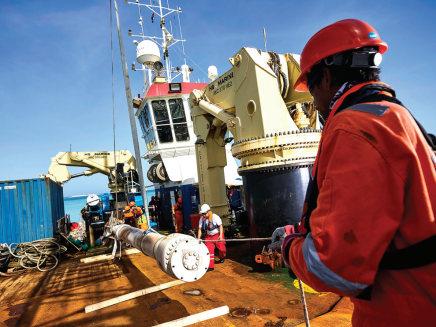
Photo Credit : AD Ports Group
